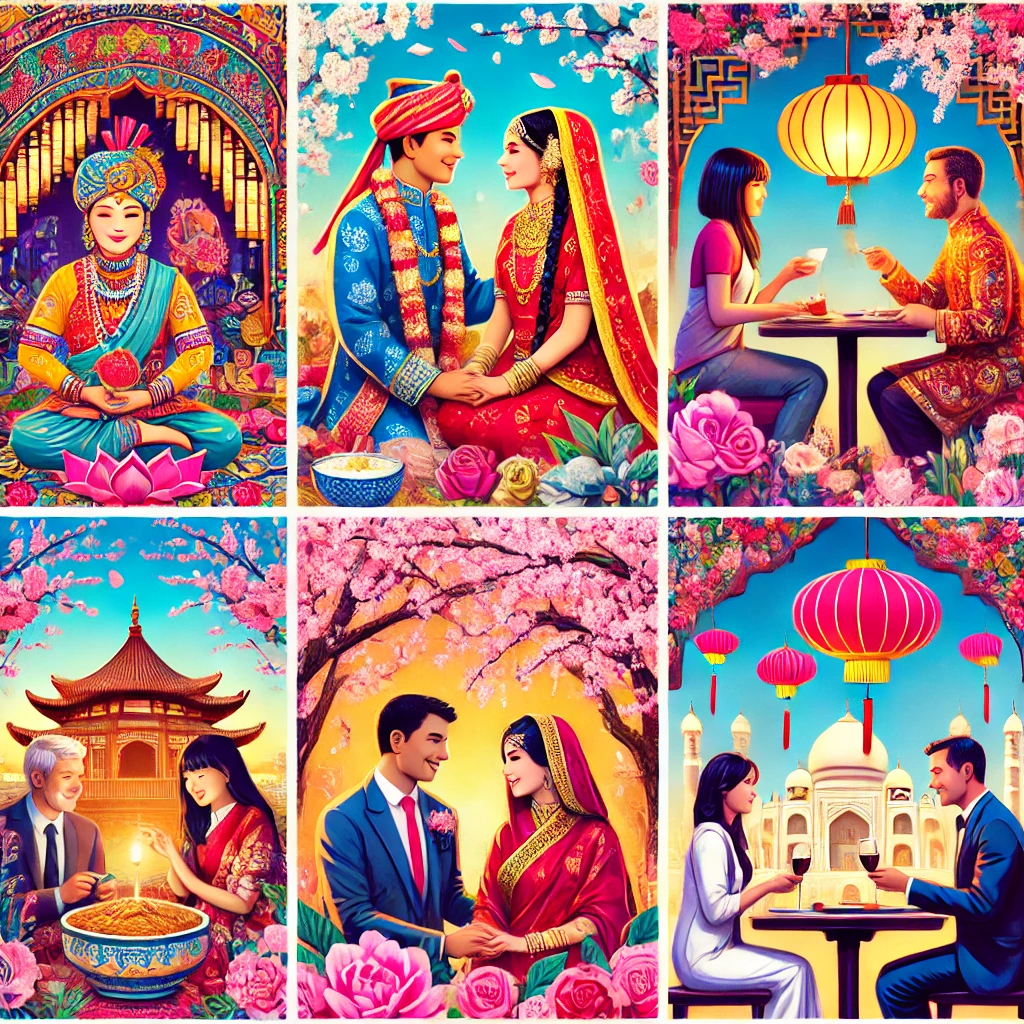
Love Around the World: How Different Cultures Approach Dating and Marriage
Love, dating, and marriage are universal experiences, yet they manifest uniquely across different cultures. These variations are shaped by historical, social, and economic factors, reflecting the rich tapestry of human societies. This article explores diverse cultural practices surrounding dating and marriage, examines global trends in relationship patterns, and delves into the societal implications of these evolving dynamics.
Cultural Variations in Dating and Marriage Practices
- East Asia: Tradition Meets Modernity
- China: Historically, marriages in China were arranged, emphasizing familial alliances over individual choice. While modern urban areas have embraced love marriages, traditional practices persist in rural regions. Notably, “marriage markets” are common, where parents gather to find suitable partners for their children, reflecting ongoing societal pressures to marry.
- Japan: Public displays of affection are generally discouraged in Japan, aligning with cultural norms that value privacy and restraint. Dating often begins with group outings, known as “gokon,” providing a comfortable environment for individuals to meet potential partners.
- South Asia: The Prevalence of Arranged Marriages
- India: Arranged marriages remain prevalent, with families playing a significant role in partner selection. However, there’s a growing acceptance of “love marriages,” especially in urban areas, indicating a shift towards individual choice within traditional frameworks.
- Western Societies: Individualism and Diverse Practices
- United States: Dating practices are diverse, reflecting the country’s multicultural fabric. The rise of online dating platforms has transformed how individuals meet, emphasizing personal choice and compatibility.
- United Kingdom: The UK has seen the emergence of unconventional dating shows, such as “Naked Attraction,” highlighting a more liberal approach to exploring romantic connections.
- Latin America: Familial Integration
- General Practices: In many Latin American cultures, integrating with a partner’s family is crucial. Familial approval often plays a significant role in the progression of relationships, underscoring the importance of community and family ties.
- Middle East and North Africa: Conservatism and Familial Oversight
- General Practices: Dating is often conducted under strict supervision, with an emphasis on preserving family honor and adhering to religious guidelines. Marriages are frequently arranged, reflecting deep-rooted cultural and religious values.
Global Trends in Marriage and Divorce Rates
Marriage and divorce rates vary significantly across the globe, influenced by cultural norms, economic conditions, and legal frameworks.
- Europe: Countries like Luxembourg, Portugal, Finland, and Spain have some of the highest divorce rates, while Ireland and Malta report the lowest.
- United States: The divorce rate has declined from 4.1 per 1,000 inhabitants in 2001 to 2.3 in 2022, indicating a trend towards more stable marriages or a decline in marriage rates.
- China: In 2024, marriages decreased by 20%, the largest recorded drop, raising concerns about declining birth rates and an aging population.
The Rise of Singledom and Its Societal Implications
A notable global trend is the increase in individuals choosing to remain single, leading to what some describe as a “relationship recession.”
- Contributing Factors: Economic challenges, shifting gender roles, and changing personal priorities contribute to this trend.
- Regional Movements: In South Korea, the “4B” movement advocates for rejecting traditional relationships, reflecting resistance against patriarchal norms.
- Implications: This shift has significant social, economic, and political implications, affecting birth rates, housing markets, and social structures.
Love, dating, and marriage are deeply influenced by cultural contexts, and as societies evolve, so do these intimate aspects of human life. Understanding these diverse practices enriches our global perspective and fosters greater empathy across cultures.



